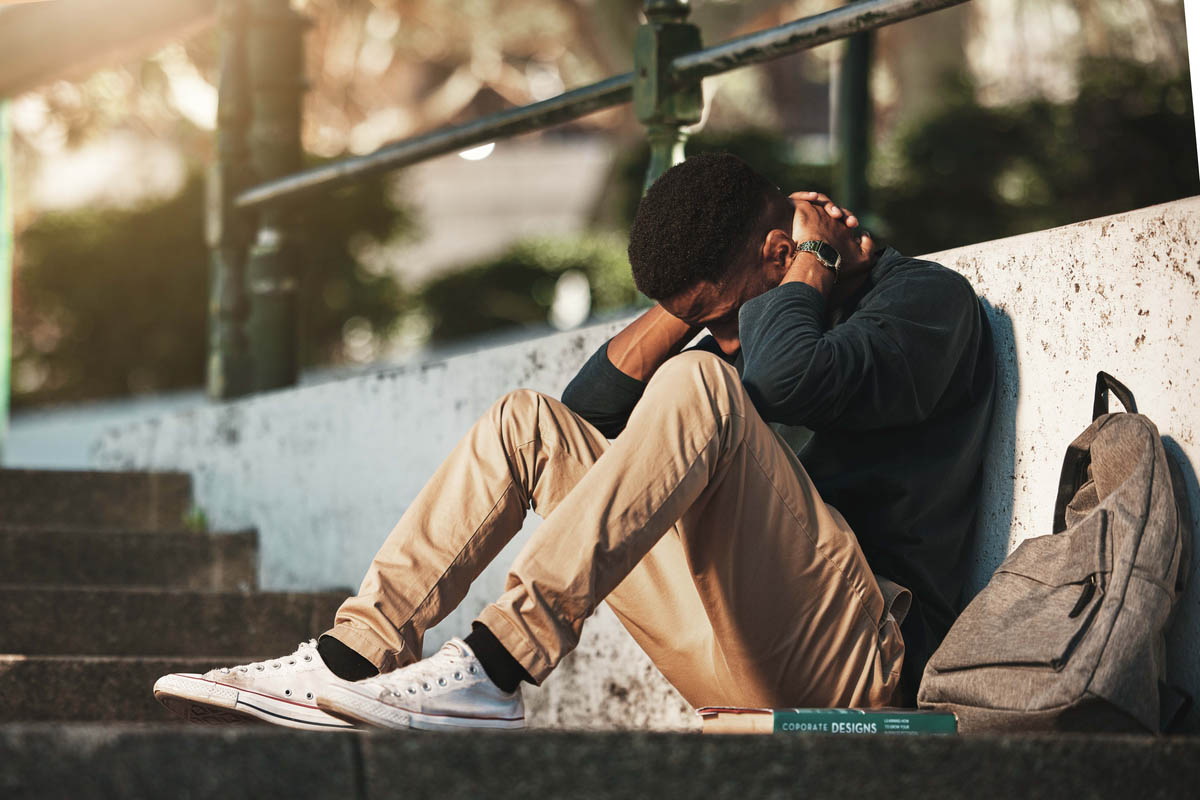Solitary confinement of inmates is a widespread practice in the prison system. In the United States, approximately 80,000 to 250,000 inmates are placed in solitary confinement annually.1,2 Whether it is to isolate a dangerous patient or for the protection of a patient from others, the harmful effects of solitary confinement on mental health have been previously well documented. Solitary confinement has been used worldwide since the start of the prison system.3 In general, solitary confinement involves a severe form of isolation with very little social interaction and tight and harsh living conditions for long hours. A short time is allowed outside of the cell (also known as segregation housing units), sometimes as little as an hour a day, but specific conditions of the actual cells vary across prison systems.3–5
There are no specific rules for solitary confinement. Therefore, correctional officers use it at their discretion, and there are limited procedural protections and alternative responses and no external oversight.6 Studies have documented the psychological effects of segregation and found associations between solitary confinement and aggression, depression, anxiety, and paranoia.7–9 There appears to be a correlation between solitary confinement and mental illness with variable effects based on underlying history, length of confinement, and treatment during confinement. Various international organizations have recognized solitary confinement as inhumane and tortuous,5 and although several legal challenges have been presented over the years, solitary confinement remains a popular method of housing in prison systems.3
We present the case of an inmate who was diagnosed with schizophrenia about 1 year after being released from prison, wherein he had been placed in solitary confinement. We further review the impact of solitary confinement on general well-being, focusing specifically on the psychological effects identified in the literature.
Case Report
A Black man in his late 20s was brought from home to a psychiatric emergency department for evaluation. The patient’s mother called emergency medical services due to his disorganized and erratic behavior and agitation. He had exposed himself to a girl aged < 15 years who was in the mother’s care. Notably, he has had behavioral issues since his early teenage years when he started using cannabinoids.
He was admitted to the inpatient psychiatric unit for stabilization, as he exhibited disorganized and tangential thought processes, hallucinations, delusions of grandeur, and aggression toward staff when his immediate needs were not met. His aggression was so extreme that he required restraints at times. He had paranoid ideation, poor impulse control, poor insight, and poor judgment.
Psychological testing was performed with the Rorschach Inkblot Test.10 The patient’s bizarre and irrelevant responses revealed a thought disorder and lack of ideation control, suggesting a thought process that prevented him from engaging with his surroundings. His cognition was noted to be concrete, inflexible, and not easily influenced by new information. In terms of interpersonal functioning, the patient was observed to anticipate antagonistic relationships with others, thereby increasing his likelihood of engaging in aggressive behavior. Testing further revealed that he was unable to form close attachments with others, resulting in self-isolation and alienation.
In terms of legal history, he was arrested and charged with possessing a gun in his early teenage years. Additionally, he had a 3-year prison sentence at age 23 years. During the prison sentence, he had about 12 months of solitary confinement due to his conviction for aggressive behavior. About 1 year after release, he was hospitalized with psychiatric symptoms and diagnosed with schizophrenia. After discharge, he was medication noncompliant and increased his cannabinoid use.
A review of collateral reports indicated that his ability to function deteriorated significantly after spending time in solitary confinement while in prison. When asked about the time he spent in isolation during his sentence, he stated, “It was not a good time.” Based on evaluations and observations, the patient was recommended a medication regimen for symptomatic management; however, he refused all medications.
Discussion
Solitary confinement has long been used in prison systems for managing difficult or aggressive inmates and mentally ill patients to maintain order and control in prison cells and as a means of punishment or reflection.3,11 The emergence of these unsettling prison-based practices can be found in the history of the penitentiary and case law pertaining to solitary confinement. In the early 1800s, the United States saw the development of 2 prison systems: the Pennsylvania system and the Auburn system. Founded on the idea that isolation and seclusion would allow prisoners to reflect on their crimes and become penitent, hence the term penitentiary, the Pennsylvania system was distinguished by prisoners’ strict isolation from society and one another. In contrast, the Auburn system was based on the belief that prisoners should be given opportunities to reform and improve themselves through collective labor and self-governance.3 These units began with the opening of the US Penitentiary in Marion, Illinois, in 1963 and spread to 34 state jurisdictions in 1996. The use of solitary confinement increased in these facilities, with some prisoners remaining in isolation for years.12–14 The psychological effects of solitary confinement have been well documented, with numerous cases of psychosis reported in both US and German prisons.
Solitary confinement is a severe type of incarceration that has been linked to long-term psychological harm and poor post-release outcomes.15 Exact details and conditions regarding solitary confinement in the prison system in the United States and around the world may differ per state and national prison guidelines. The general concept of solitary confinement is rigid isolation in cement cells without windows or any source of natural light, with meals received in the cells through a slit in the door. This isolation leads to minimal social interaction, access to personal belongings, and contact to the outside or other prisoners for 22 to 23 hours out of 24 hours.3–5,11 It is challenging for people who are subjected to such environmental restrictions to keep up a regular schedule of daytime alertness and nighttime sleep. These inmates frequently discover that they are unable to resist sleeping during the day and are unable to get any sound sleep at night.16
While the data for short-term solitary confinement are minimal, prolonged segregation, mistreatment by correctional staff, and preexisting psychological vulnerabilities can lead to negative mental health outcomes for prisoners. Literature on the relationship between solitary confinement and mental health noted that the negative psychopathological effects may continue after the confinement period.4 The negative effects can be attributed to sensory deprivation, social isolation, and loss of control over one’s environment. The lack of meaningful activity is further compounded by the effect of continual exposure to artificial light and diminished opportunity to experience natural daylight. The individual’s difficulty in maintaining a normal day-night sleep cycle is often worsened by constant intrusions during the nighttime, such as steel doors slamming shut and flashlights shining in their face.16 Solitary confinement can also carry a stigma and lead to feelings of shame and ostracization from society. These prisoners receive no rehabilitation while in their cells and are sometimes released directly from the isolation cells into society.17
Evidence18 suggests that social isolation may contribute to the development of mental illnesses, including schizophrenia, as seen in our case, in which the patient presented with psychosis and was diagnosed with schizophrenia 1 year after his prison release. The patient had underlying behavior abnormalities and prior early age cannabinoid use, which placed him at risk for these negative effects of solitary confinement. Furthermore, his ability to function deteriorated significantly after completing time in solitary confinement. While early cannabinoid use may have led to neurocognitive abnormalities related to brain development,19 his symptoms of psychosis began after rigid isolation during solitary confinement. It is essential to recognize psychiatric symptoms such as anxiety, difficulty focusing or organizing thoughts, intense emotional distress, somatic complaints, and perceptual disturbances.20 It has been documented that 8%–19% of prisoners have psychiatric disorders that cause major functional disabilities, and 15%–20% require some form of psychiatric intervention while incarcerated.21
Grassian,16 during his evaluation of over 200 patients, noted specific psychiatric symptoms consistently among inmates in solitary confinement, both in state and federal penitentiaries, including (1) hyperresponsivity to external stimuli, (2) perceptual distortions like illusions and hallucinations, (3) panic attacks, (4) difficulties with cognition and memory, and (5) intrusive thoughts including overt paranoia and poor impulse control. One review22 noted a significant presence of psychological and emotional trauma after solitary confinement: > 90% of those in solitary confinement exhibited anxiety and nervousness and 70% had symptoms of an impending nervous breakdown. It was reported that more than 50% of inmates were talking to themselves and had violent fantasies and irrational anger, and > 25% of inmates exhibited perceptual distortions, hallucinations, and suicidal thoughts.22 When compared to those in “normal” prison conditions versus protected housing and supermax units, the symptoms were significantly heightened in those in solitary housing.22 Hallucinations and irrational anger were noted in > 40% of those in solitary confinement versus 1.7% in normal prison conditions.22 Researchers have defined these effects as isolated sickness or security housing unit syndrome.5 While these effects are intensified in those with underlying mental illness, they have also been reported in patients without underlying psychopathologies.4,5
Prisoners with preexisting mental illnesses are particularly vulnerable to the negative psychological effects of solitary confinement. It is estimated that more than half of prisoners in solitary confinement have mental disorders, while only about 5% of the general prison population has a psychiatric illness. The lack of comprehensive screening when entering the prison system leads to poor identification of patients with underlying mental illnesses.3 These prisoners are often not treated for their mental health conditions due to limited and subpar psychiatric resources in correctional facilities.3
Often, the behavior caused by psychiatric illness, such as refusing to leave their cells, destroying property, starting fires, smearing urine and feces, or engaging in self-mutilation, is frequently used to justify placing prisoners in solitary confinement.3,22–25 The extreme isolation and harsh conditions of segregation housing units can worsen the symptoms of mental illness and may even cause severe psychiatric morbidity, disability, suffering, and mortality.
Keeping in mind our patient’s background, we attempted to understand the racial disparities surrounding solitary confinement within penitentiaries. Several studies have found that Black offenders are disproportionately more likely to receive disciplinary action for prison rule violations compared to White offenders.3 This differential treatment may be due to the greater discretion afforded to prison officials in the criminal justice system, particularly in secluded prison environments that are not subject to public scrutiny. In addition, Black prisoners may be more likely to be perceived as aggressive and prone to rule breaking, leading to greater efforts to control their behavior, resulting in increased hostility from the prisoners.15 Pullen-Blasnik et al,15 studying the population prevalence of solitary confinement, reported that 1 in 9 Black men had undergone solitary confinement in a state prison by age 32 years. The cumulative risk of solitary confinement for Black men is 3 times higher than for Latino men and more than 8 times higher than for White men.
Several recommendations7,22–25 have been suggested for reforming solitary confinement and include the following:
- Excluding prisoners with current or prior histories of psychiatric disorders from solitary confinement.
- Mandating screening for prisoners entering solitary confinement for underlying psychiatric illnesses.
- Monitoring using self-screening scales while inmates are in solitary confinement.
- Ensuring confidentiality while meeting with the psychiatric treatment team.
- Removing prisoners who decompensate in solitary confinement and providing them with emergent psychiatric treatment.
- Maintaining humane physical conditions in solitary confinement.
- Offering opportunities for normal social interaction by limiting the duration of internment during solitary confinement.
- Incorporating programs and services during solitary confinement designed to help prisoners successfully reintegrate into society upon release.
Conclusion
Solitary confinement has been used extensively in prison systems across the United States and internationally to maintain order and gain control over difficult and aggressive inmates. The harmful effects of solitary confinement on the general well-being and mental health of inmates have been well documented for many years.5 However, more research is needed to fully understand the relationship between solitary confinement and mental health. While solitary confinement may be necessary for a select few, there should be comprehensive guidelines to avoid the associated adverse and prolonged effects.
Article Information
Published Online: November 30, 2023. https://doi.org/10.4088/PCC.23cr03503
© 2023 Physicians Postgraduate Press, Inc.
Prim Care Companion CNS Disord 2023;25(6):23cr03503
Submitted: February 3, 2023; accepted May 17, 2023.
To Cite: Gill G, Segal Y, Yadav G, et al. Solitary confinement in prison systems and future psychopathological effects. Prim Care Companion CNS Disord. 2023;25(6):23cr03503.
Author Affiliations: BronxCare Health System at Icahn School of Medicine at Mount Sinai, Bronx, New York (Gill, Segal, Yadav, Kainth, Kochhar, Walyzada, Gunturu); American University of Integrative Sciences, Bridgetown, Barbados (Singh).
Corresponding Author: Gurtej Gill, MD, BronxCare Health System at Icahn School of Medicine at Mount Sinai, 1276 Fulton Ave, Bronx, NY 10456 ([email protected]).
Relevant Financial Relationships: None.
Funding/Support: None.
Patient Consent: Consent was received from the patient to publish the case report, and information has been de-identified to protect anonymity.
References (25)

- Cloud DH, Drucker E, Browne A, et al. Public health and solitary confinement in the United States. Am J Public Health. 2015;105(1):18–26. PubMed CrossRef
- Resnik J, VanCleave A, Bell K, et al. Aiming to Reduce Time-in-Cell: Reports from Correctional Systems on the Numbers of Prisoners in Restricted Housing and on the Potential of Policy Changes to Bring About Reforms. 2016. Accessed April 19, 2023. https://papers.ssrn.com/abstract=2874492
- Arrigo BA, Bullock JL. The psychological effects of solitary confinement on prisoners in supermax units: reviewing what we know and recommending what should change. Int J Offender Ther Comp Criminol. 2008;52(6):622–640. PubMed CrossRef
- Luigi M, Dellazizzo L, Giguère CÉ, et al. Shedding light on “the hole”: a systematic review and meta-analysis on adverse psychological effects and mortality following solitary confinement in correctional settings. Front Psychiatry. 2020;11:840. PubMed CrossRef
- Shalev S. Solitary confinement as a prison health issue. 2017. Accessed April 19, 2023. https://papers.ssrn.com/abstract=3073610
- Reiter K. 23/7: Pelican Bay Prison and the Rise of Long-Term Solitary Confinement. Yale University Press; 2016:320.
- Haney C. The psychological effects of solitary confinement: a systematic critique. Crime Justice. 2018;47(1):365–416. CrossRef
- Kaba F, Lewis A, Glowa-Kollisch S, et al. Solitary confinement and risk of self-harm among jail inmates. Am J Public Health. 2014;104(3):442–447. PubMed CrossRef
- Lovell D. Patterns of disturbed behavior in a supermax population. Crim Justice Behav. 2008;35(8):985–1004. CrossRef
- Steisel IM. The Rorschach Test and suggestibility. J Abnorm Psychol. 1952;47(3):607–614. PubMed
- Palermo GB. Reflections on imprisonment. Int J Offender Ther Comp Criminol. 2008;52(6):619–621. PubMed CrossRef
- Rogers R. Solitary confinement. Int J Offender Ther Comp Criminol. 1993;37(4):339–349. CrossRef
- Pizarro J, Stenius VMK. Supermax prisons: their rise, current practices, and effect on inmates. Prison J. 2004;84(2):248–264. CrossRef
- Grassian S, Friedman N. Effects of sensory deprivation in psychiatric seclusion and solitary confinement. Int J Law Psychiatry. 1986;8(1):49–65. PubMed CrossRef
- Pullen-Blasnik H, Simes JT, Western B. The population prevalence of solitary confinement. (Internet) Sci Adv. 2021;7(48):eabj1928. PubMed CrossRef
- Grassian S. Psychiatric effects of solitary confinement. 22 WASH. U. J. L. & POL’Y 325 (2006). Accessed April 19, 2023. https://openscholarship.wustl.edu/law_journal_law_policy/vol22/iss1/24
- Commission warns of harm isolation can do to prisoners. USA Today. June 7, 2006.
- Sadock BJ, Sadock VA, Ruiz P. Kaplan and Sadock’s Comprehensive Textbook of Psychiatry. Wolters and Kluwer; 2017.
- Jacobus J, Tapert SF. Effects of cannabis on the adolescent brain. Curr Pharm Des. 2014;20(13):2186–2193. PubMed CrossRef
- Harrison P, Sadock BJ, Sadock VA, et al. Kaplan and Sadock’s Synopsis of Psychiatry: Behavioural Sciences/Clinical Psychiatry. Wolters and Kluwer; 2015.
- Metzner JL. Class action litigation in correctional psychiatry. J Am Acad Psychiatry Law. 2002;30(1):19–29, discussion 30–32.
- Haney C. Mental Health Issues in Long-Term Solitary and “Supermax” Confinement. Crime Delinq. 2003;49(1):124–156. CrossRef
- Haney C. Reforming Punishment: Psychological Limits to the Pains of Imprisonment. [Internet]. American Psychological Association; 2006:386.
- Human RWS. Human Rights Watch World Report 1999. Human Rights Watch; 1998:518.
- Jackson M. The psychological effects of administrative segregation. Can J Criminol. 2001;43(1):109–116. CrossRef
Please sign in or purchase this PDF for $40.




